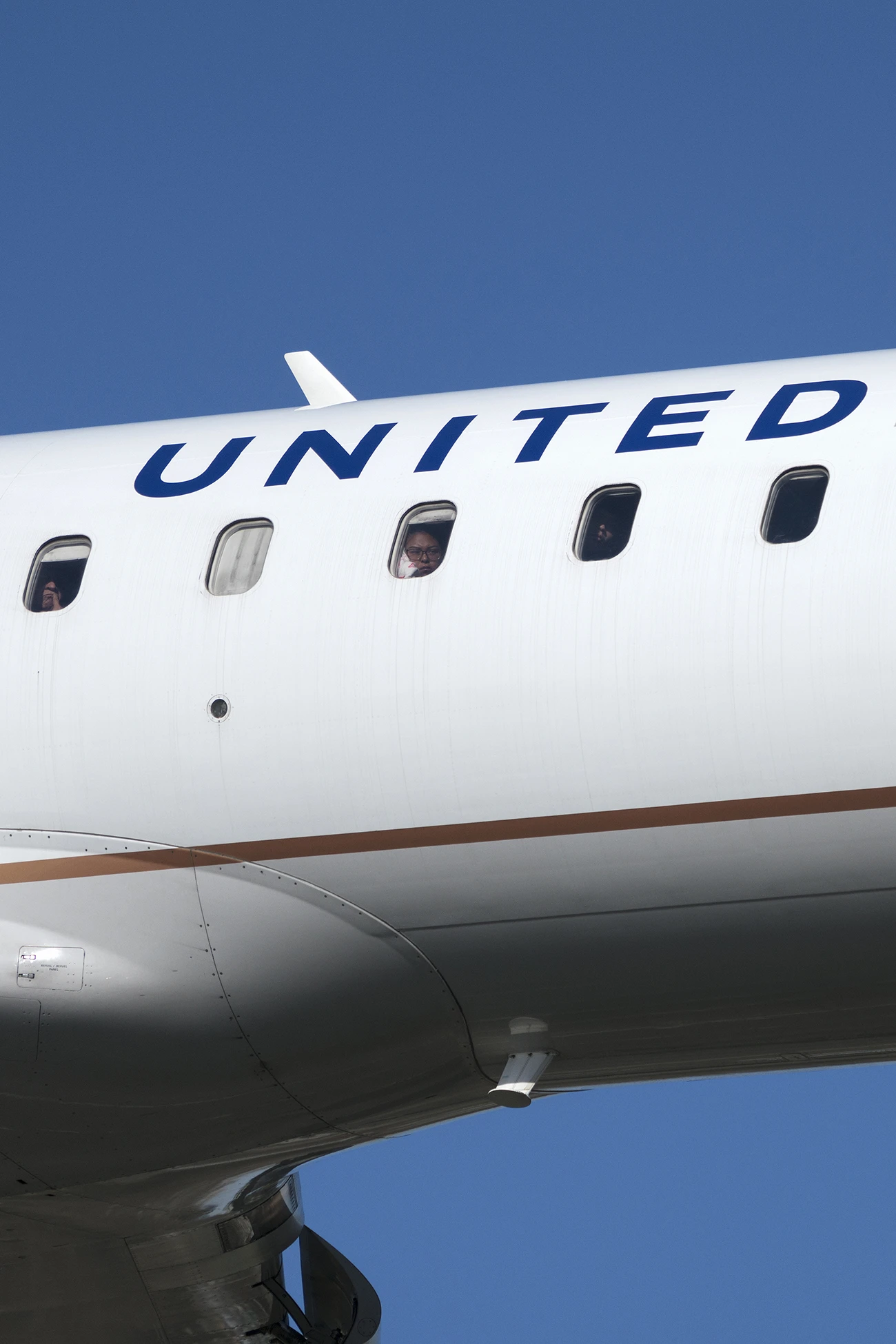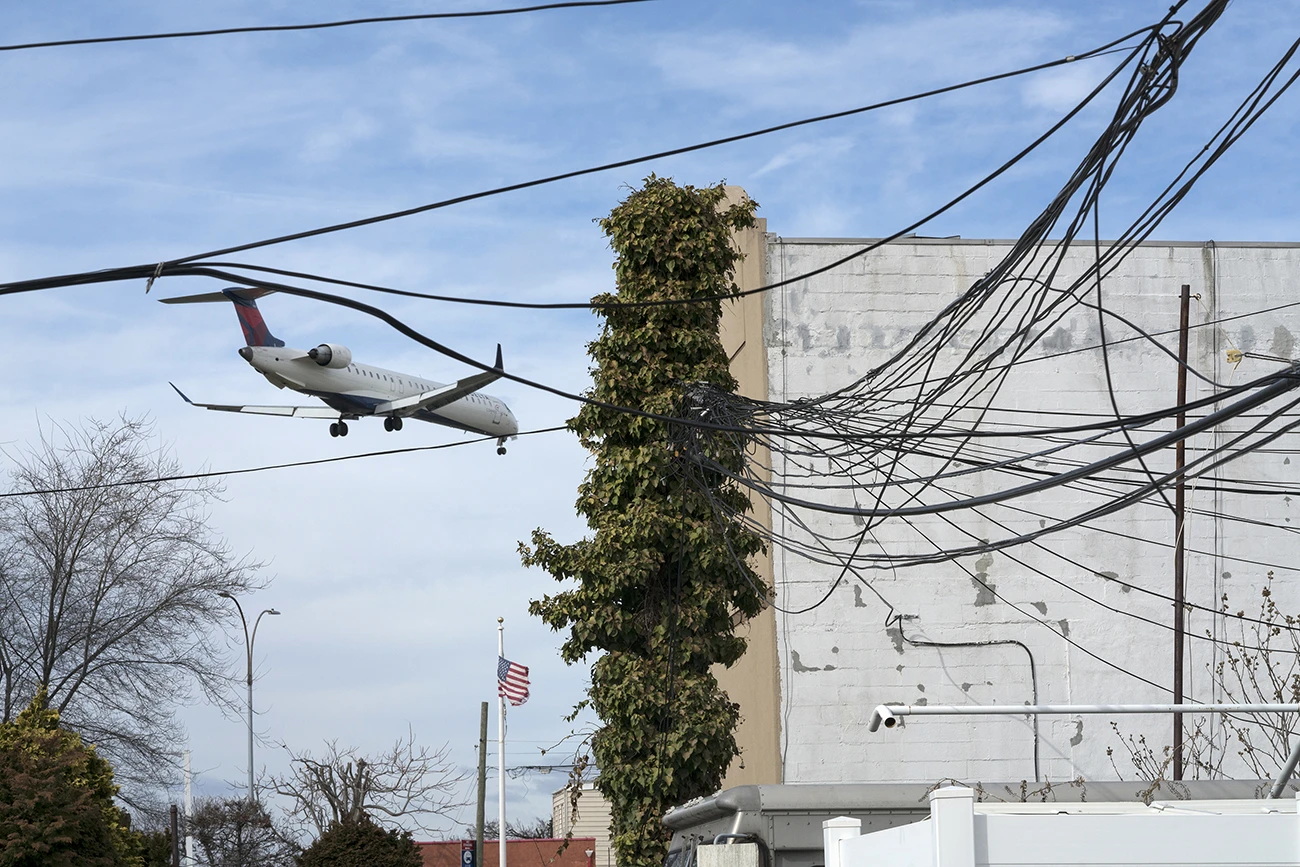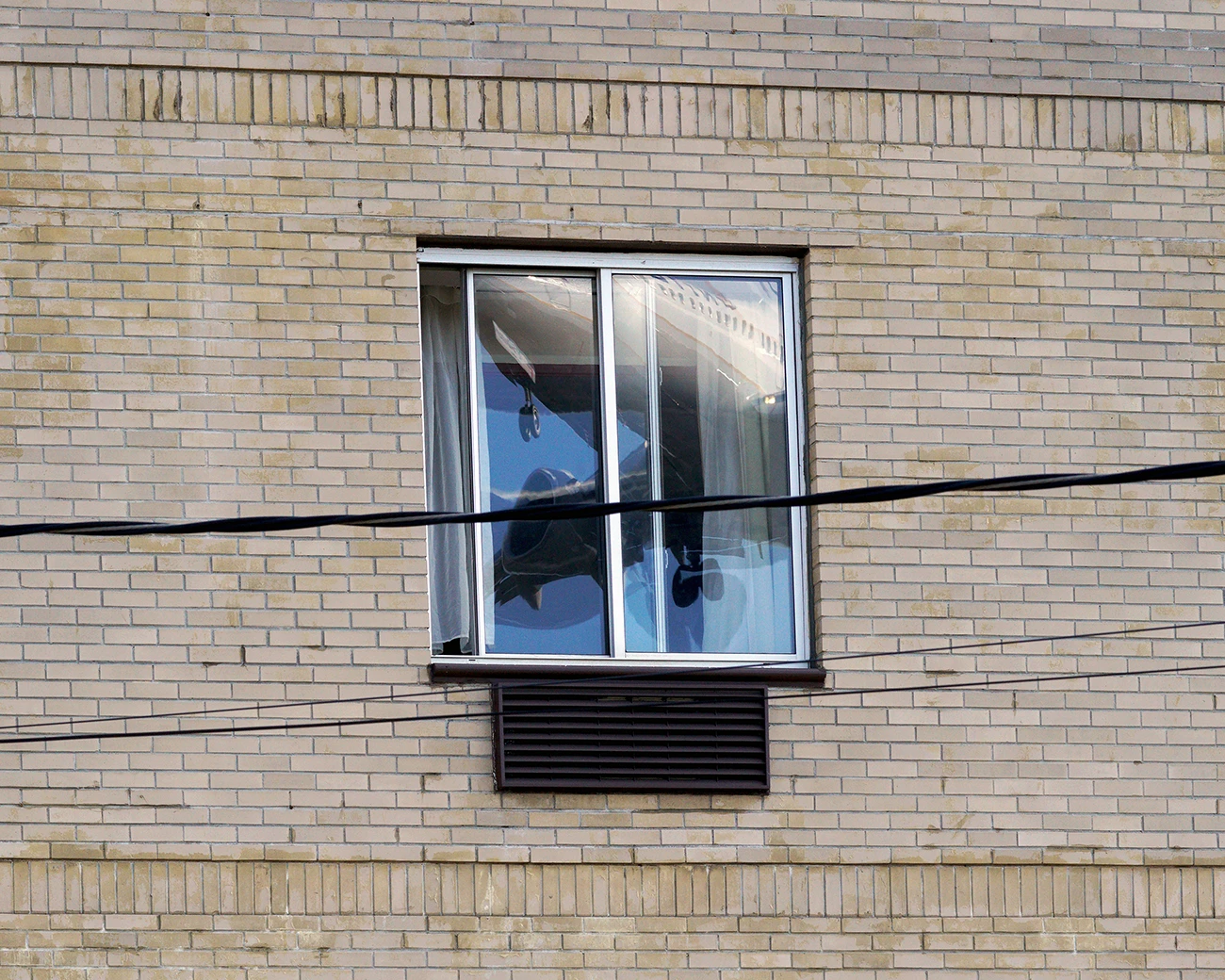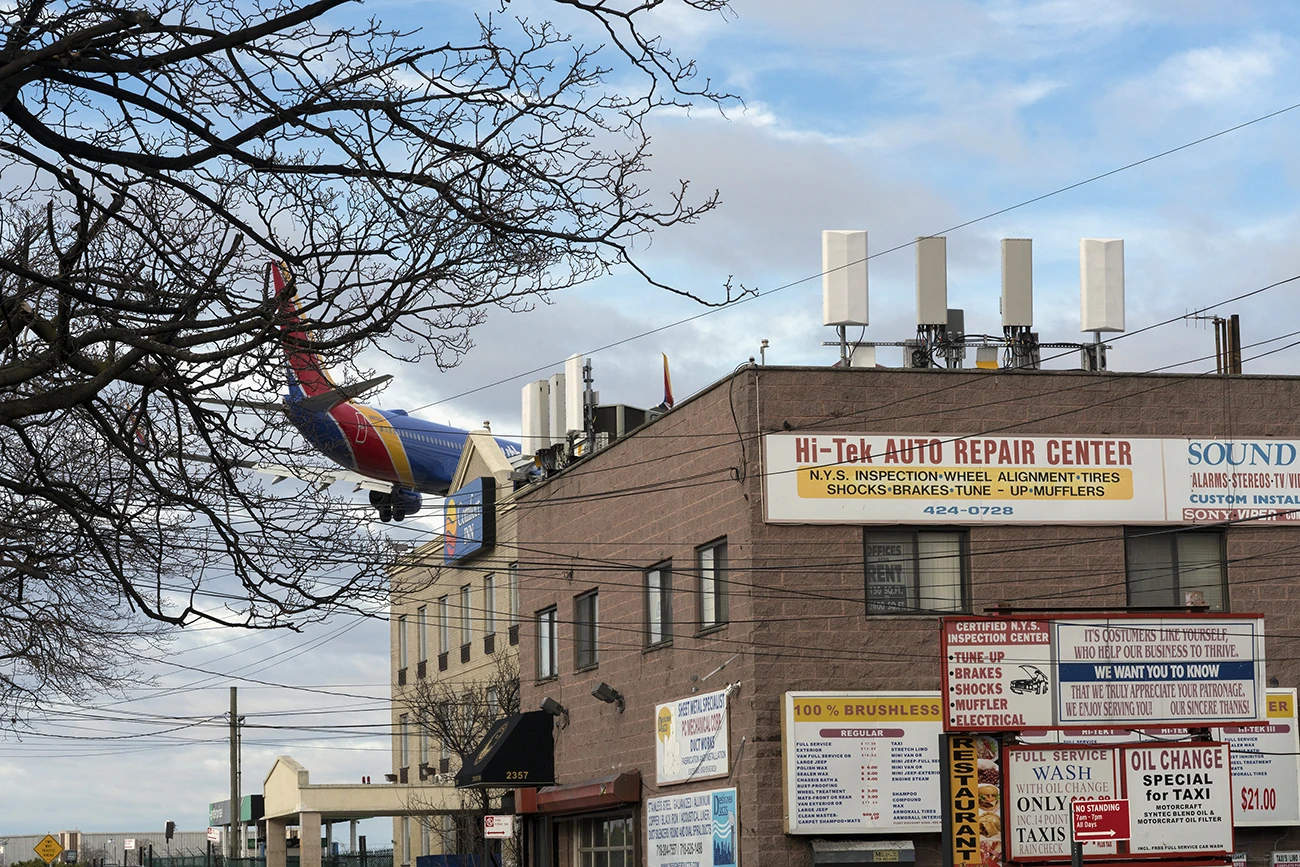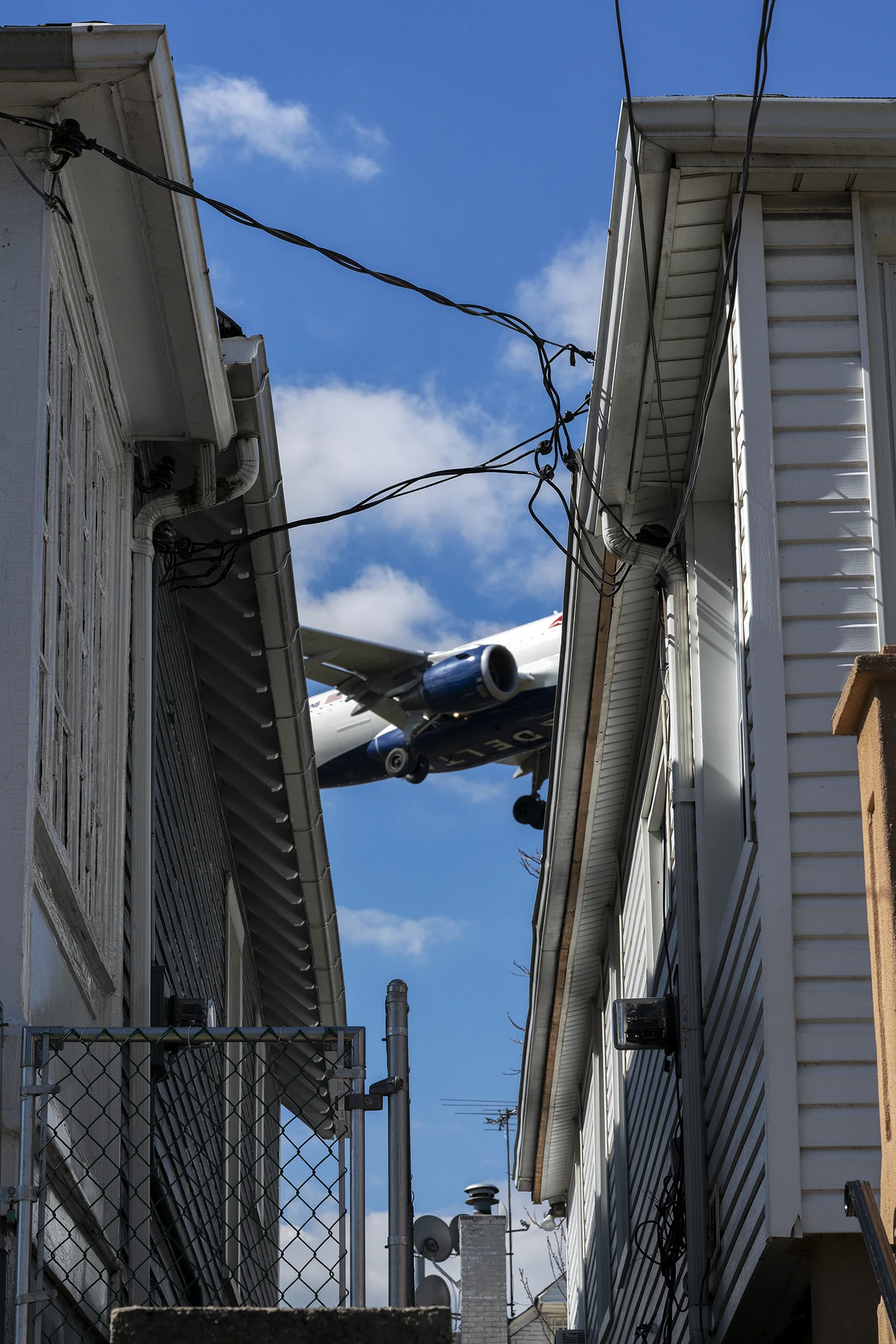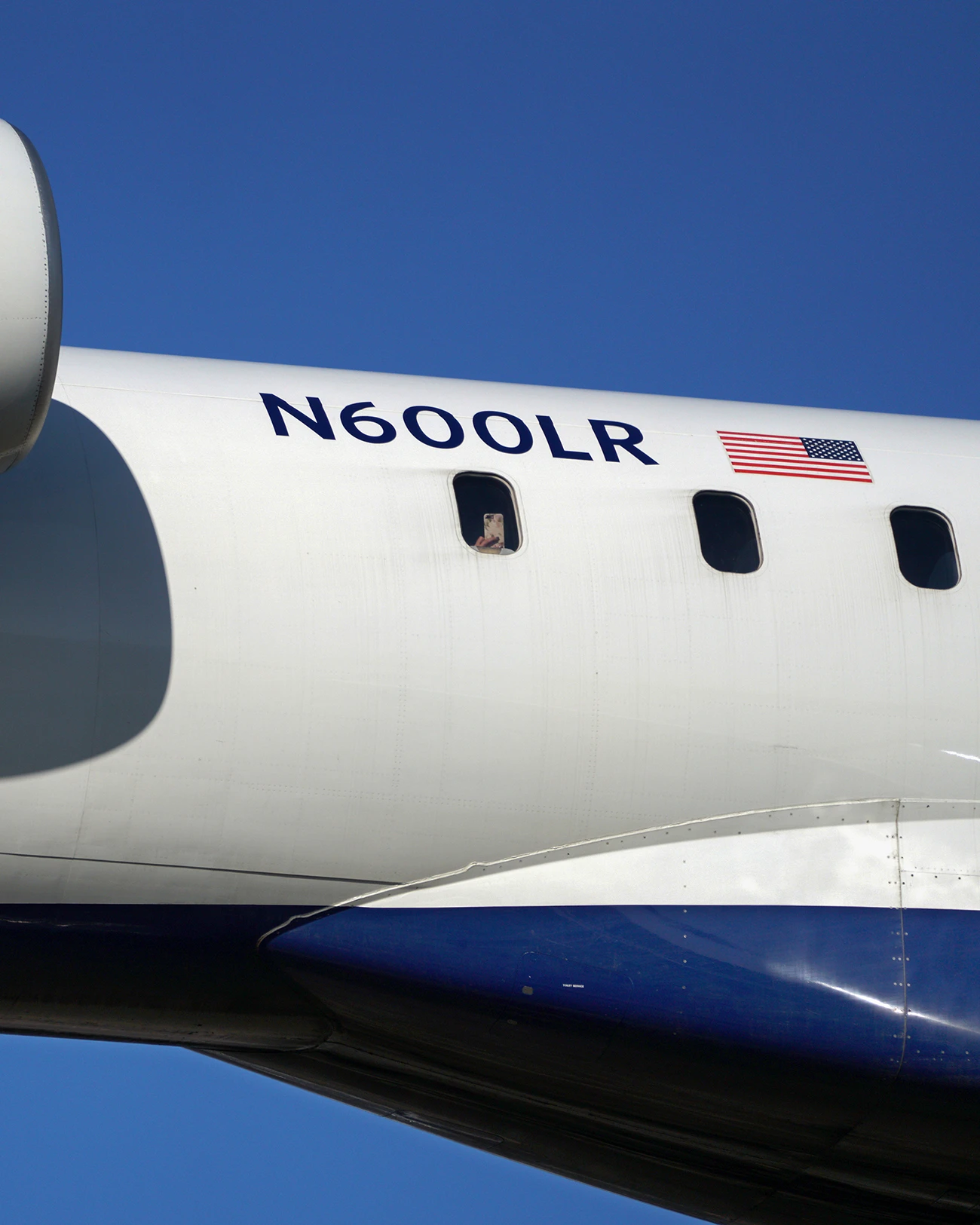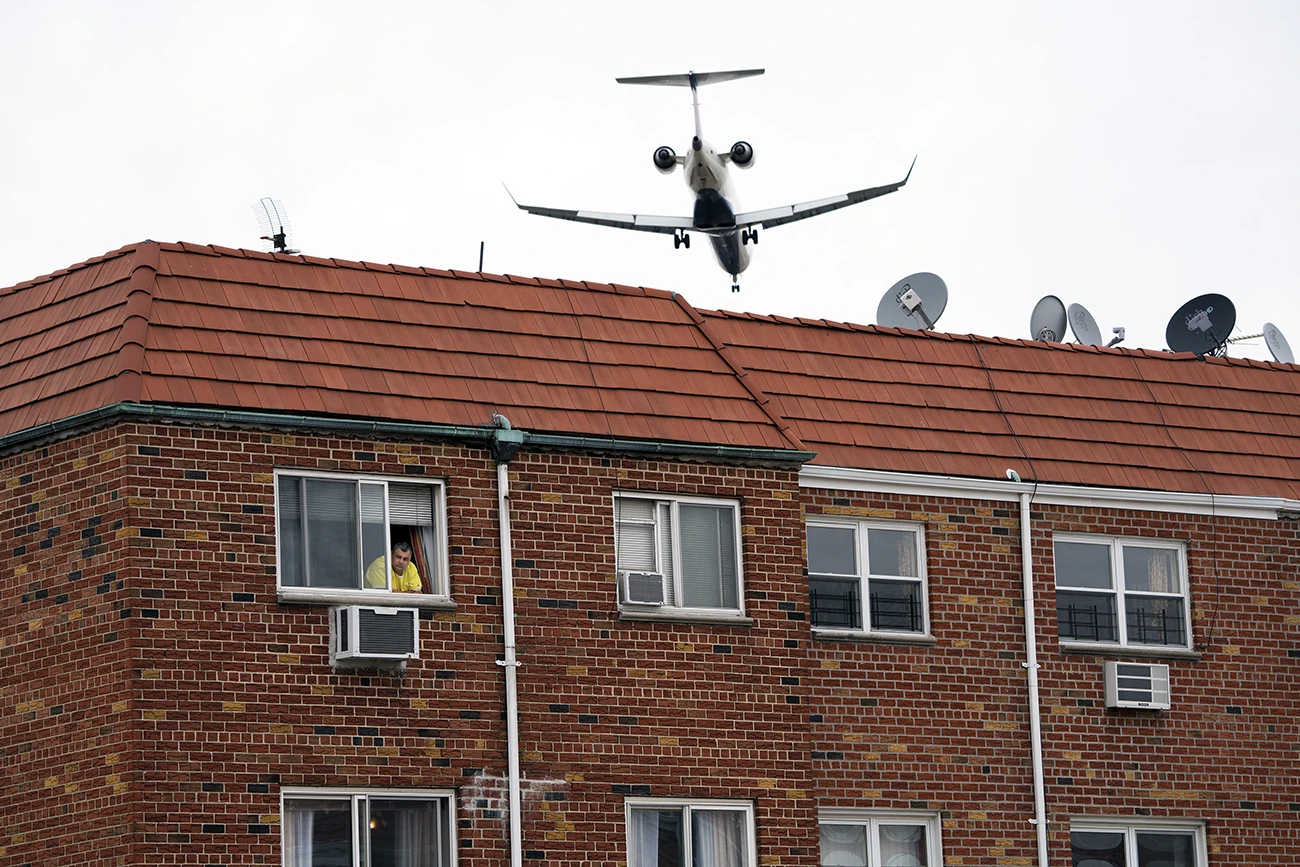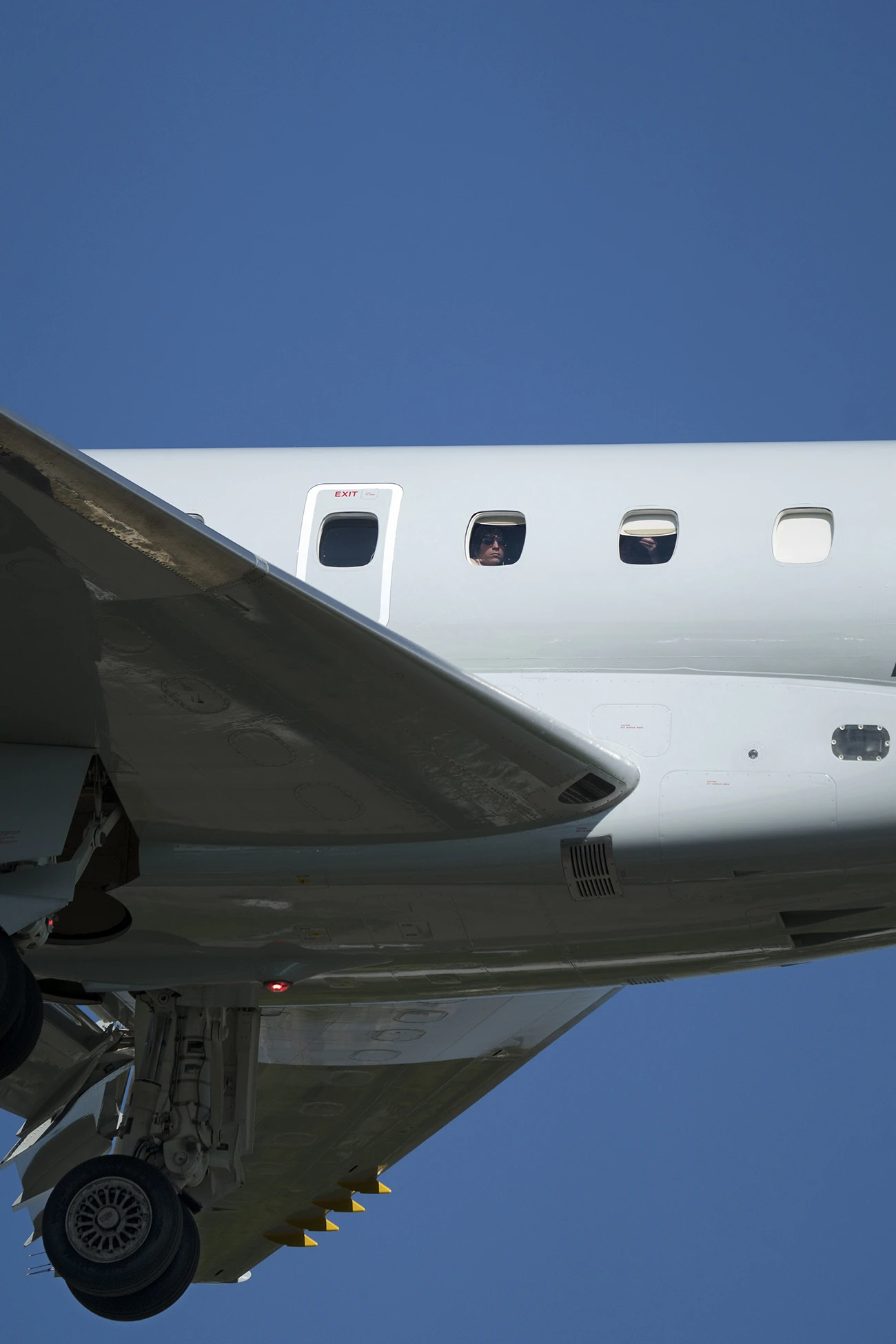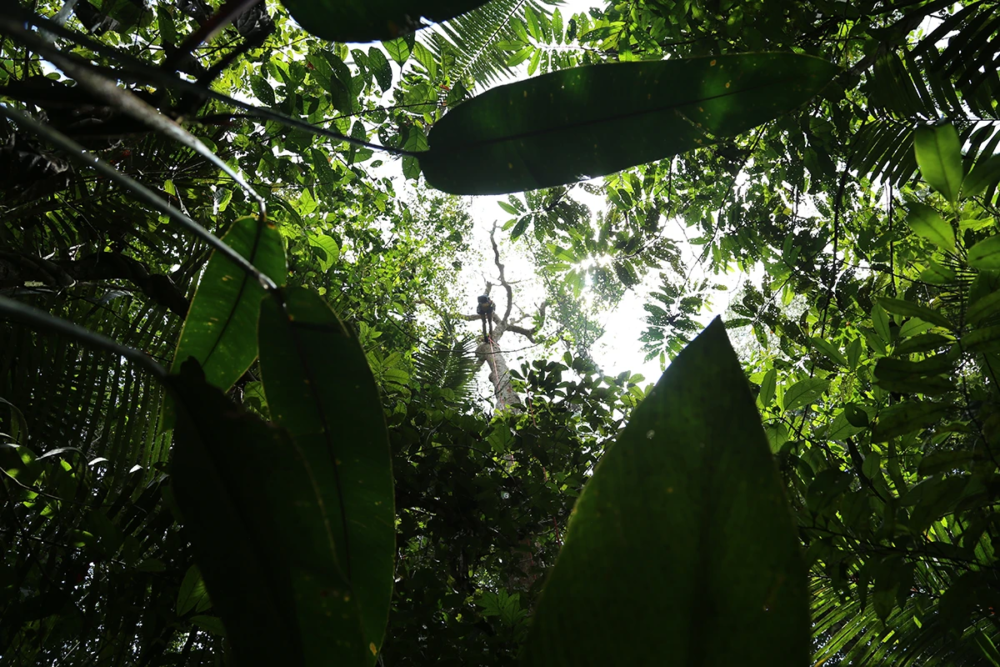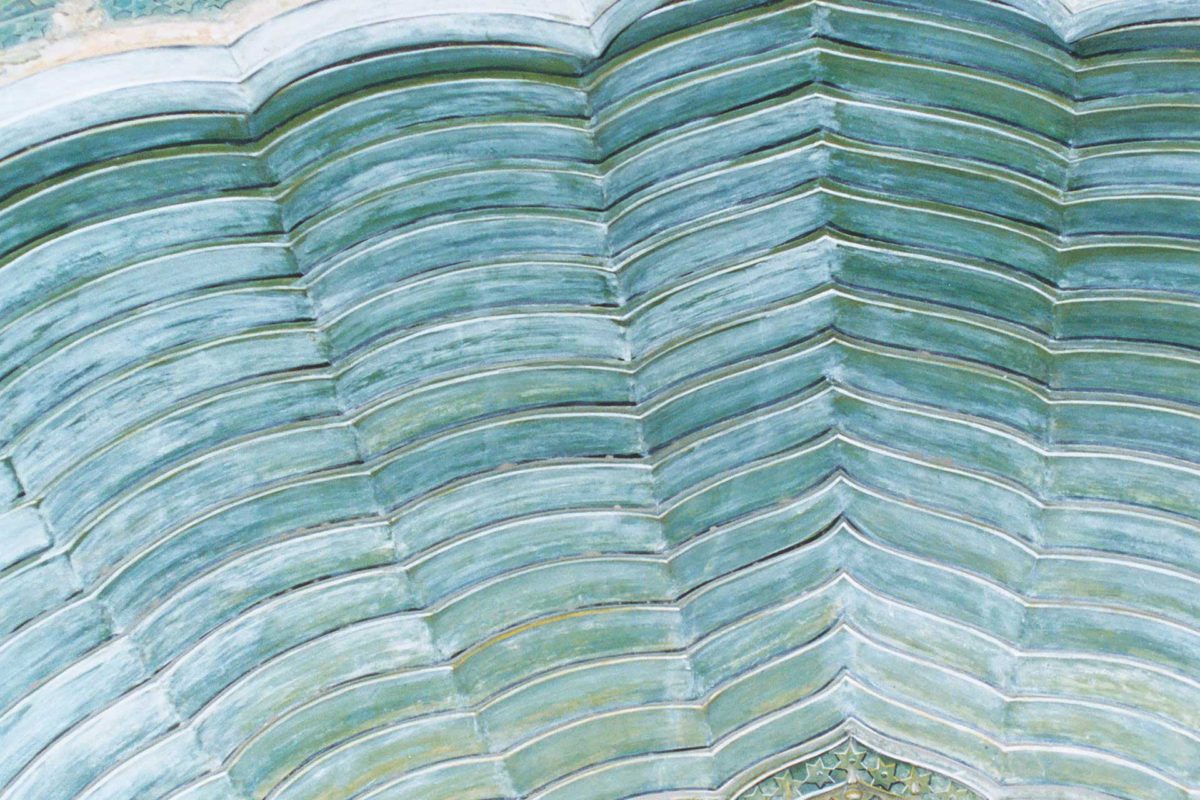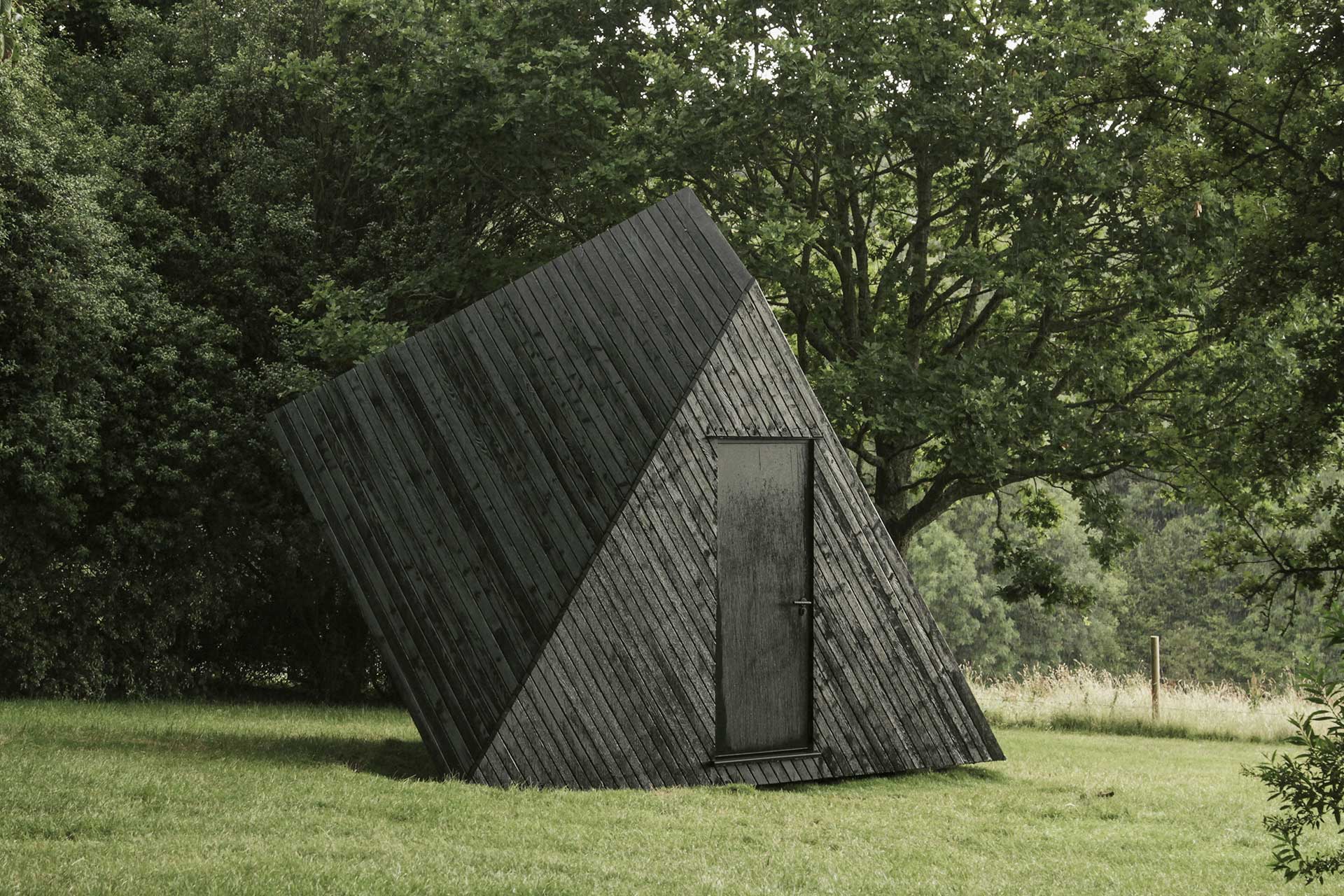
Under Suspended Rupture: Community and Isolation Beneath LaGuardia
David Rothenberg’s long-term visual study of Landing Lights Park exposes how the proximity of landing planes shapes the lived experience of East Elmhurst—where infrastructure divides bodies and communities
David Rothenberg and the everyday surrealism of East Elmhurst
The residential neighborhood of East Elmhurst in New York’s Queens borough has a singular atmosphere. The area surrounding LaGuardia Airport—including the oddly named Landing Lights Park—is marked by the constant passage of low-flying airplanes, weaving aerial traffic directly into the daily lives of its residents.
New York-based photographer David Rothenberg offers a visual exercise in perception, transforming the mundane reality of a classic American neighborhood into something new, layered, and strangely poetic. Through his lens, perspectives that would otherwise remain disconnected suddenly intersect.
From non-places to intimate cityscapes: Rothenberg’s alternative visual narrative
What might at first glance resemble a collection of in-between zones—those “non-places” theorized by anthropologist Marc Augé—becomes, in Rothenberg’s imagery, a candid portrayal of human presence in spaces typically ignored or only considered for their transitional function.
“For many people,” he says, “these neighborhoods exist at the margins of the city’s visual narrative. But to me, they’re vivid expressions of its vitality and humanity.”
These places, at once suspended and deeply influenced by the life surrounding them, are emblematic of Rothenberg’s broader photographic practice. In his series Covered Tracks (2015–17), for example, he explored the relationship between urban landscapes and objects in neighborhoods shaped by the 7 subway line. In Roosevelt Station (2019–20), he portrayed commuters during peak hours at one of the city’s busiest transit hubs. Despite the frantic nature of these environments, his photographs consistently retain a sense of quiet and stillness—as if the relentless motion around them has no power to disturb local rhythms.
In what Rothenberg calls “frenetic concentrations of the city’s pace,” he spends extended periods observing and exploring, capturing people and moments that would otherwise remain unseen or unrecorded.
Landing Lights Park: a surreal pocket of calm beneath the jets
Since 2018, Rothenberg has focused his attention on Landing Lights Park, where the extreme noise and turbulence caused by passing airplanes contrasts with the strangely serene atmosphere that pervades his images. As the artist notes, particularly during air travel, “there’s a distinct sense of detachment from the outside world. Airports feel disconnected from the neighborhoods around them, and the multiple layers of security reinforce this separation.”
Landing Lights Park exists within this liminal dimension—disconnected from “real life”—where the park and the surrounding community operate on a separate temporal rhythm.
Portraits in midair: seeing and being seen from both sides of flight
Rothenberg’s images often depict planes so close to the houses below they seem to graze rooftops or threaten collision. But beyond the mechanical presence of these aircraft, the photographer captures something more intimate: the passengers themselves. From the ground, he manages to photograph people looking out from their cabin windows, creating an unexpected reversal of gaze.
“Once you’re inside the pressurized, climate-controlled cabin of an airplane, the sense of isolation really begins,” Rothenberg reflects. “When a passenger looks down from the sky, I never expect to be seen—or photographed. But capturing images of people midair reveals a kind of vulnerability, offering a glimpse into a space that’s usually hidden.”
He has spent years returning to this corner of Queens, fascinated by its ever-changing character. Everyday objects, people, and situations are suddenly thrown into visual dialogue with the absurd and constant backdrop of commercial jets flying just overhead. “That contrast between the familiar and the intrusive became the central theme of the project.”
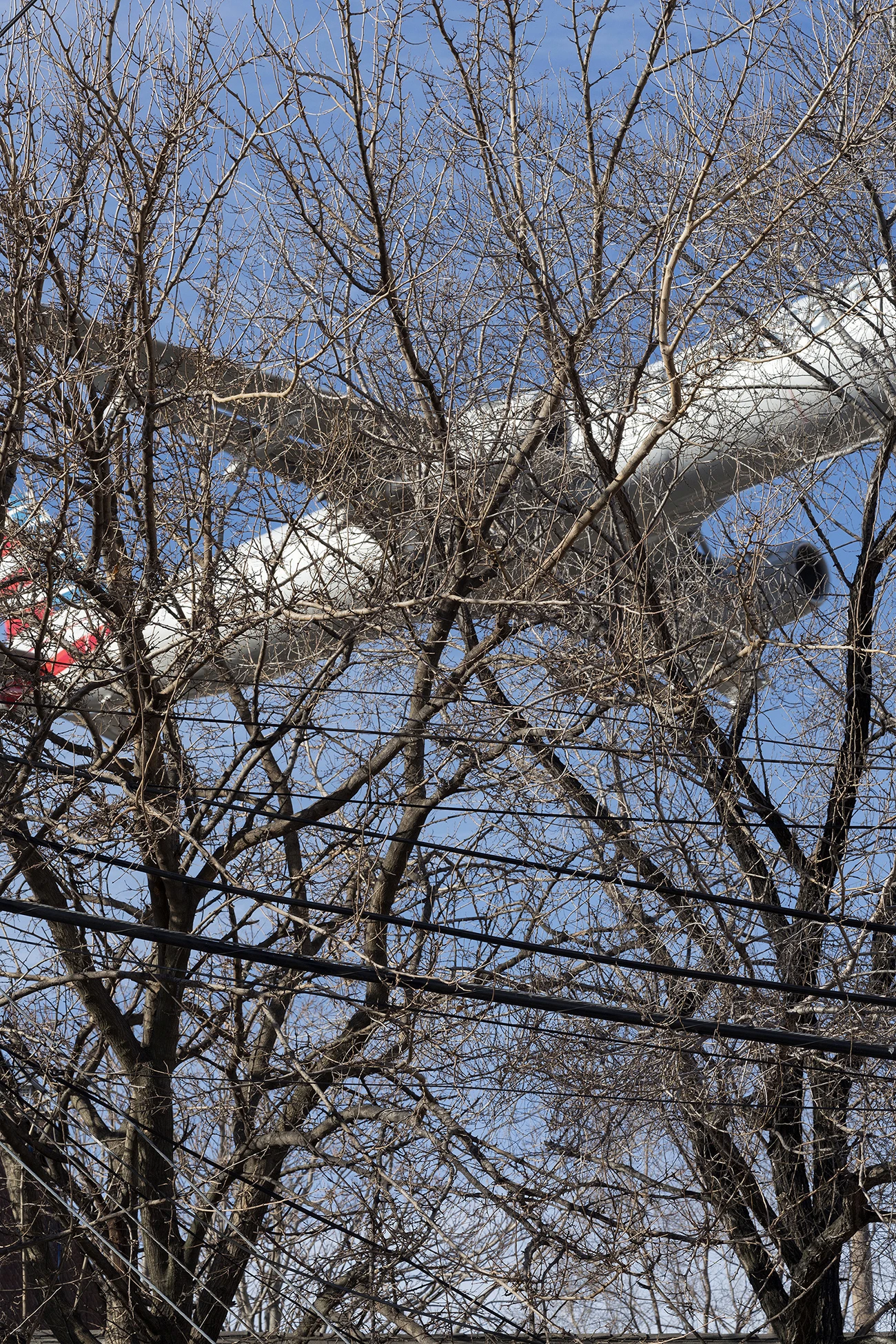
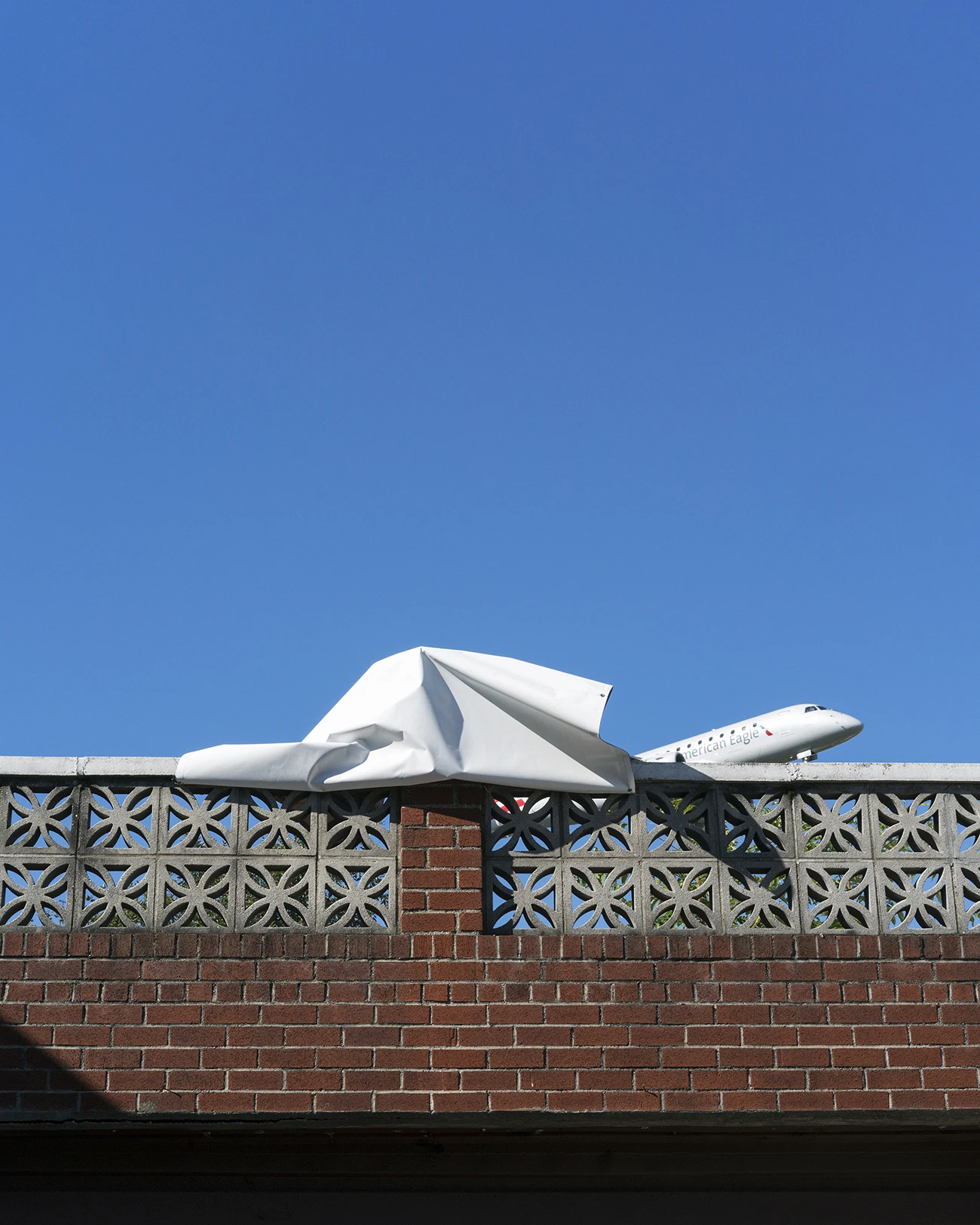
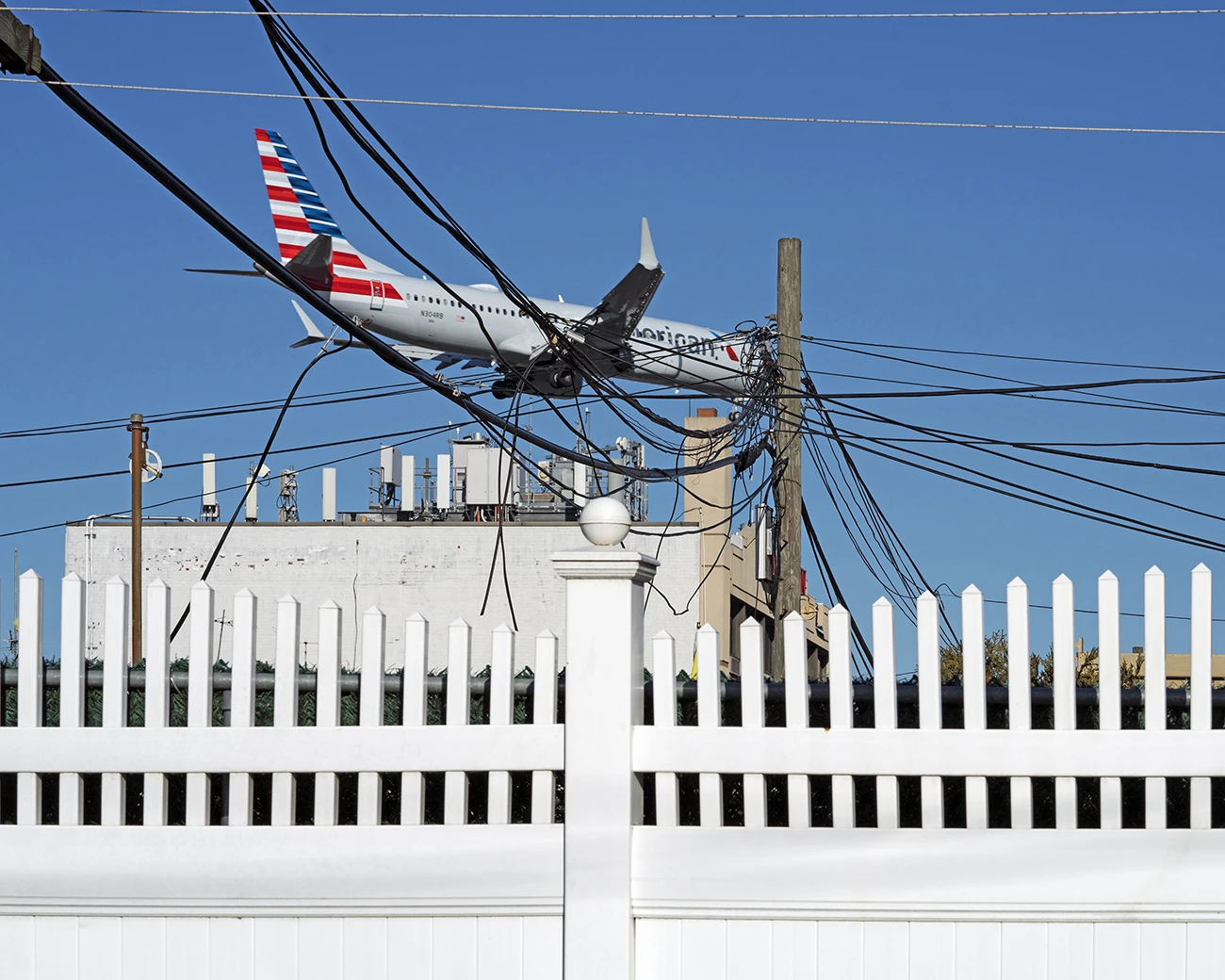
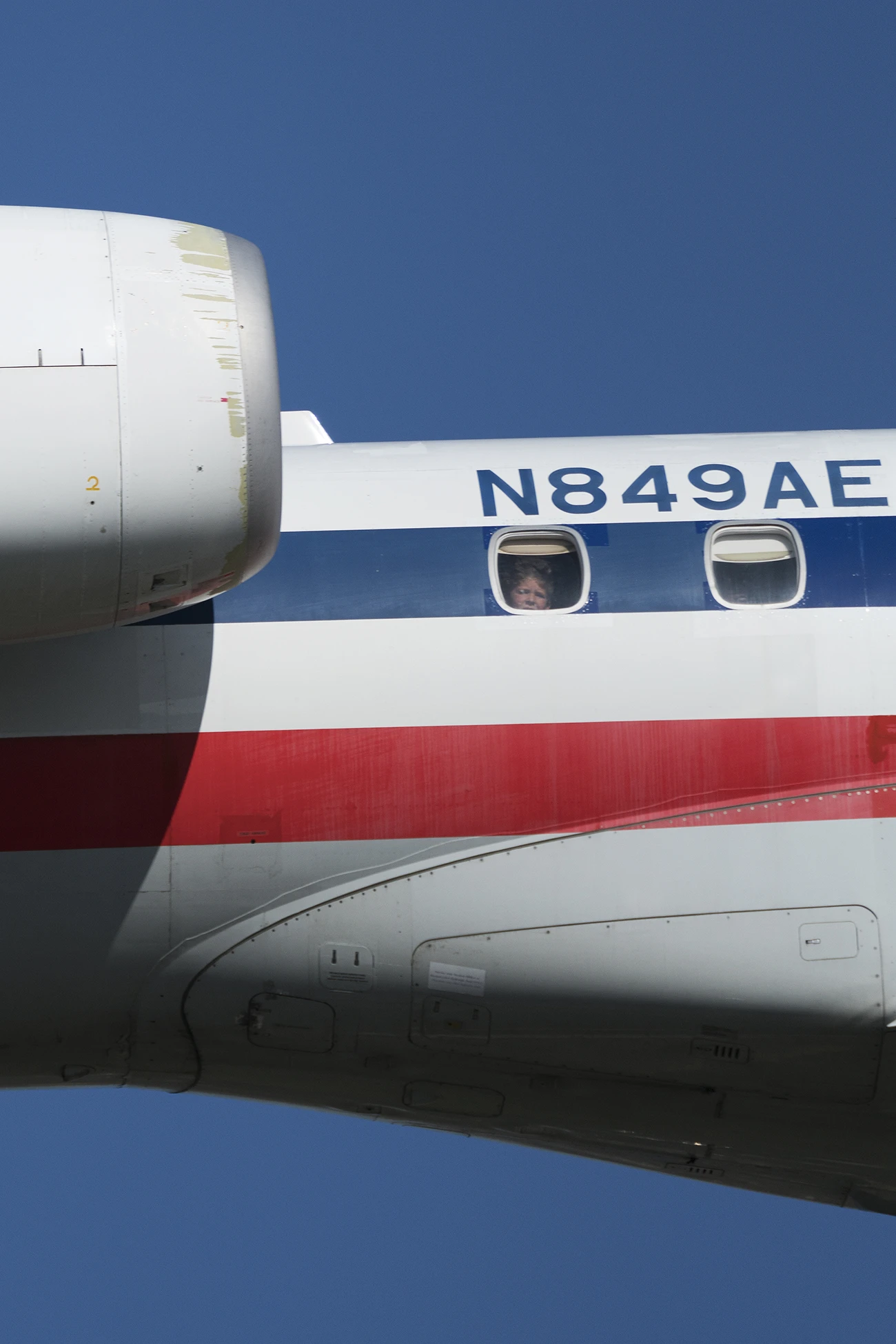
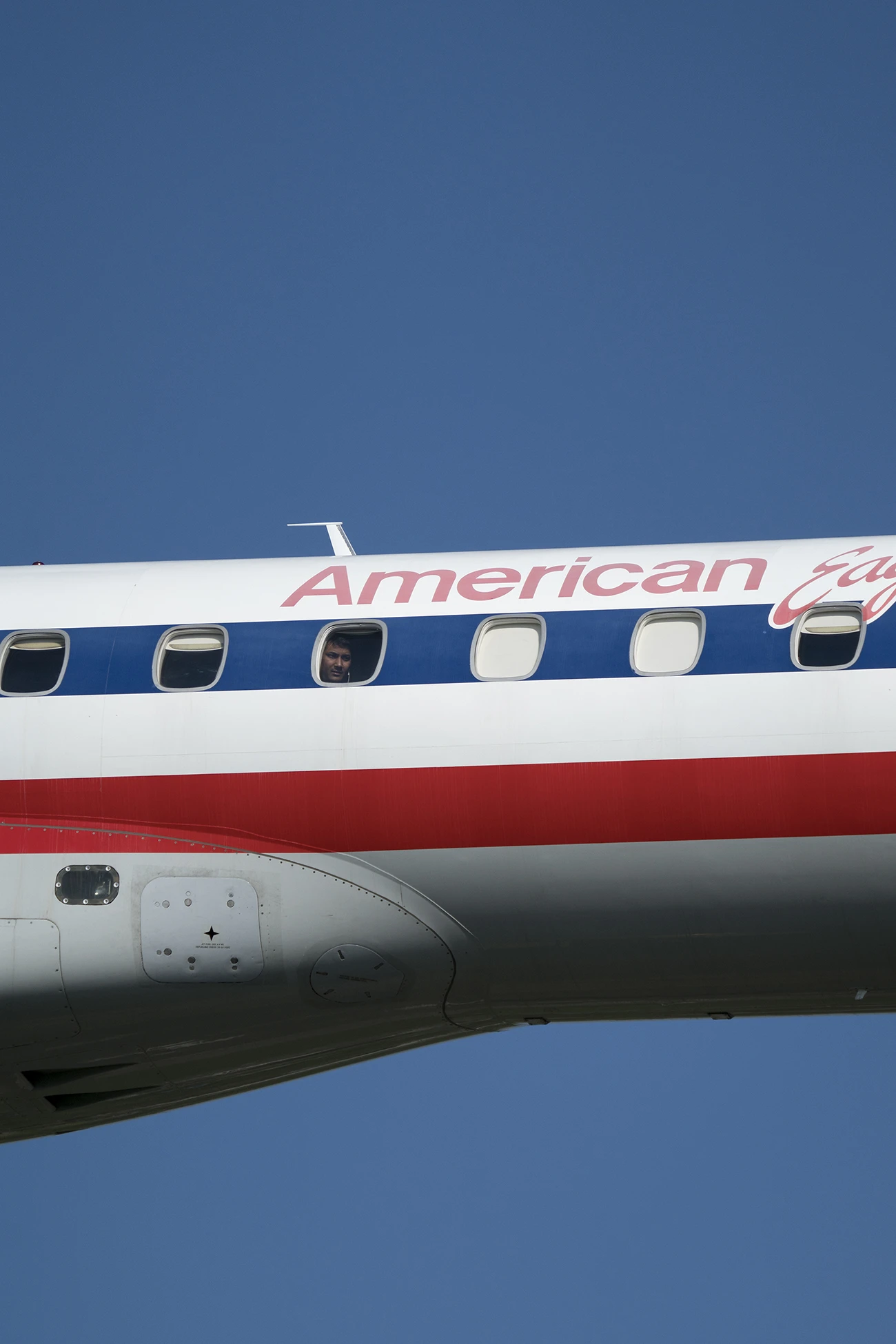
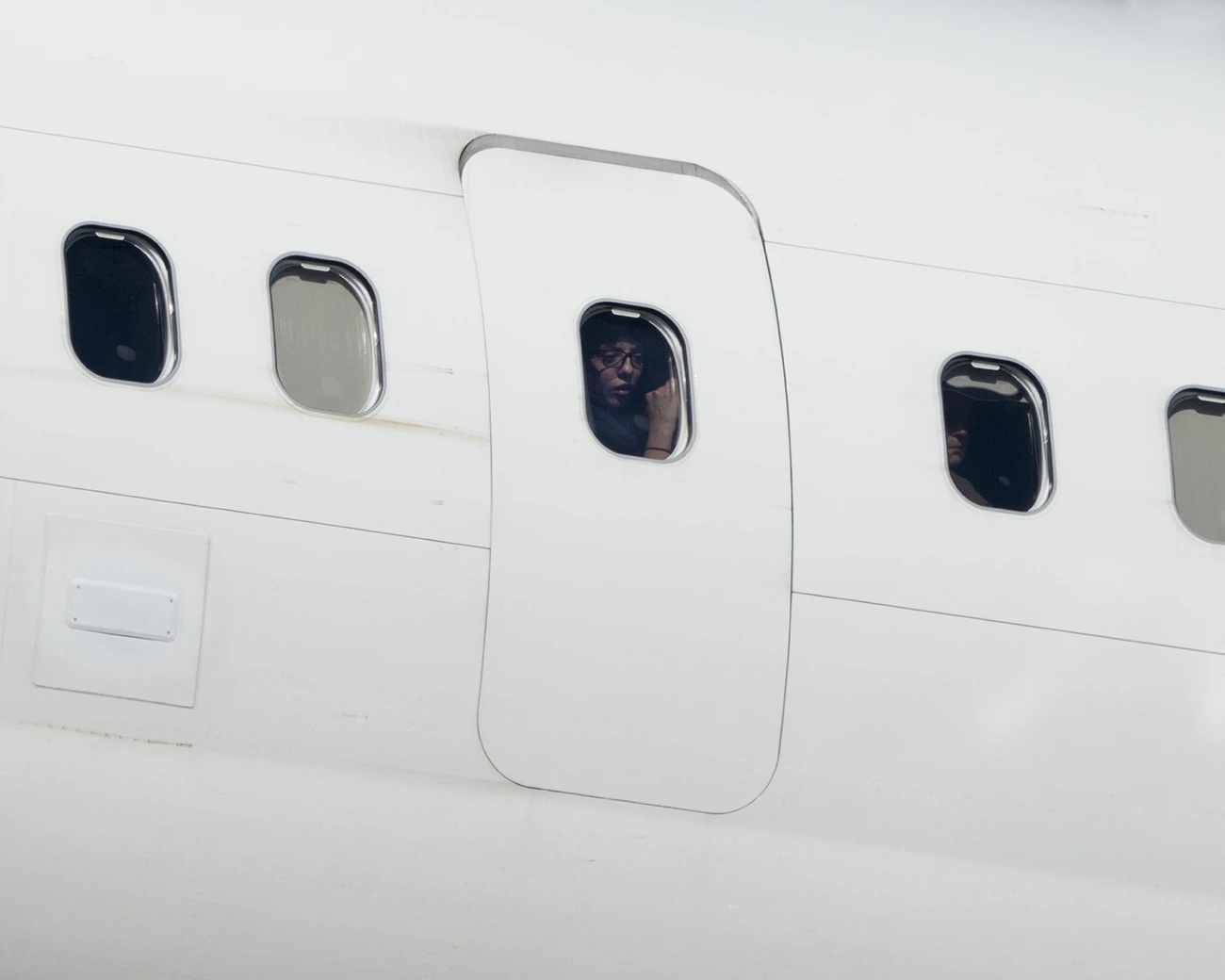
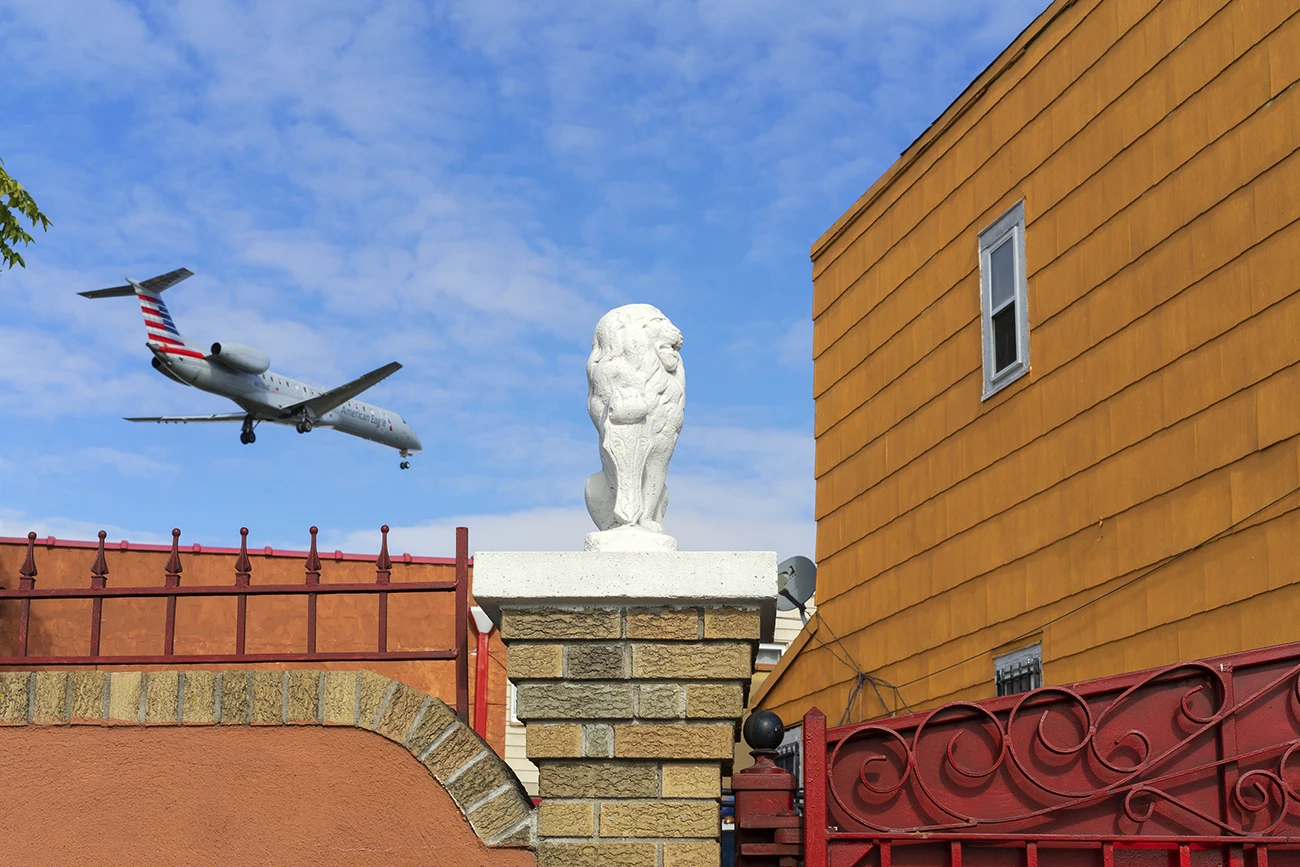
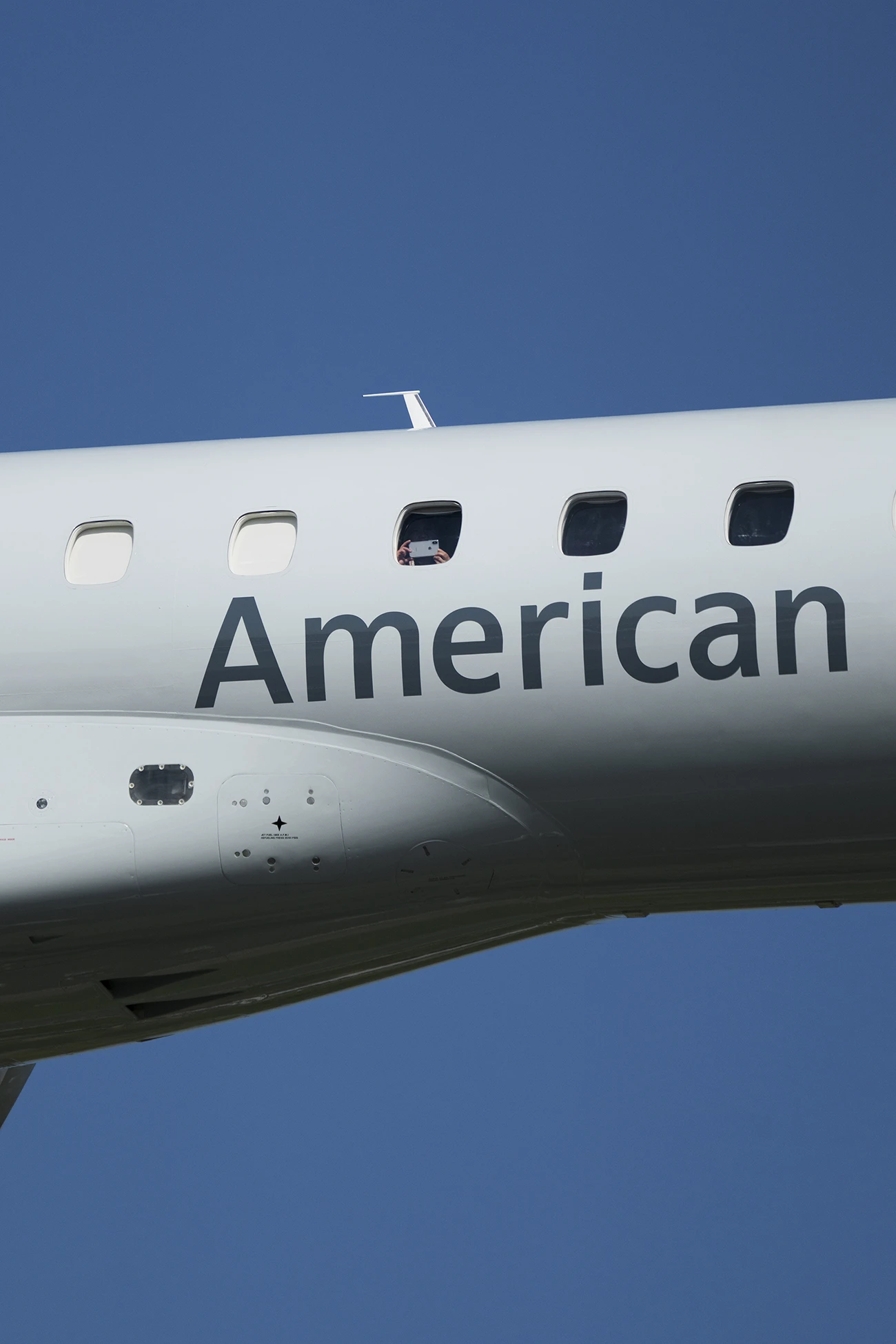
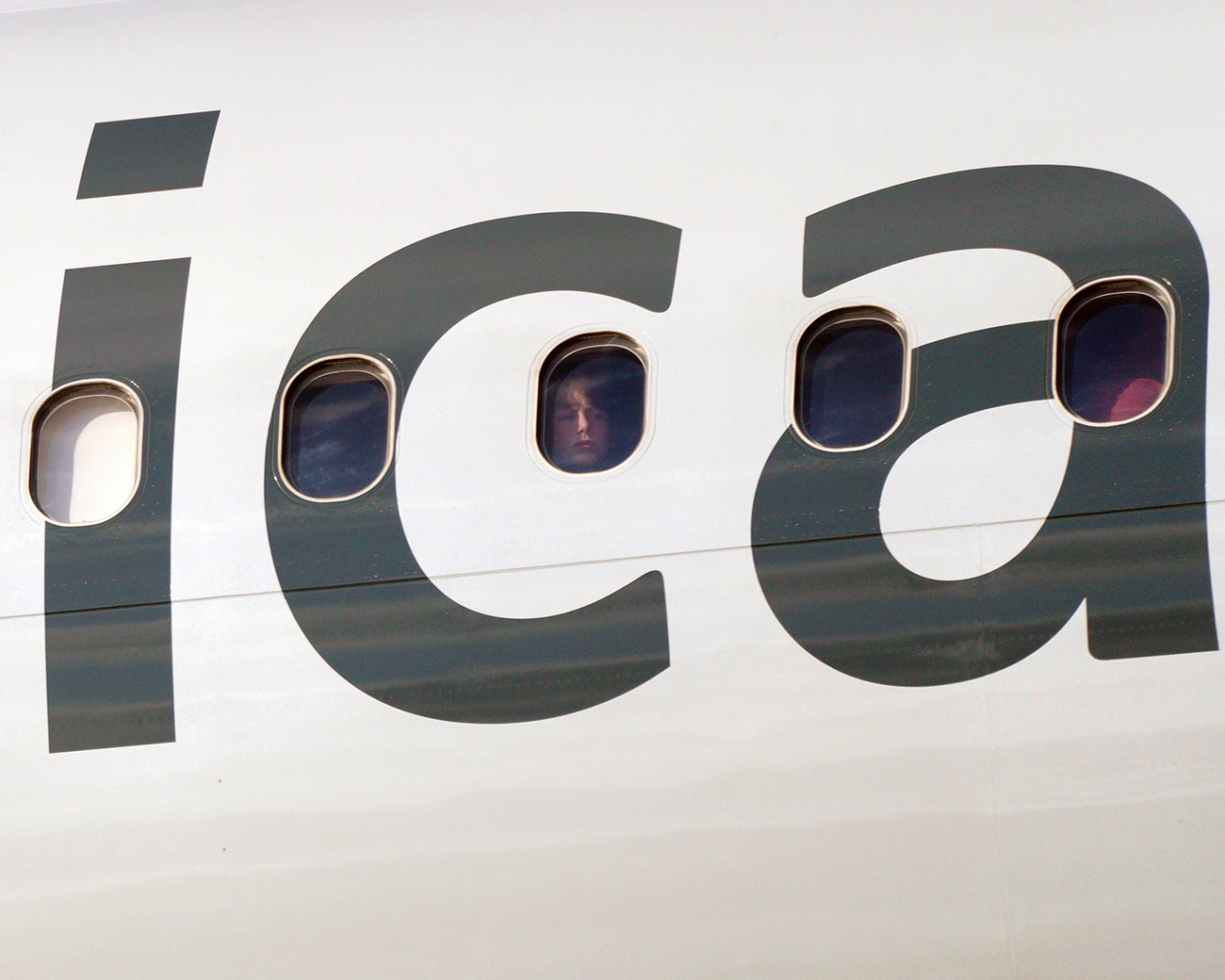
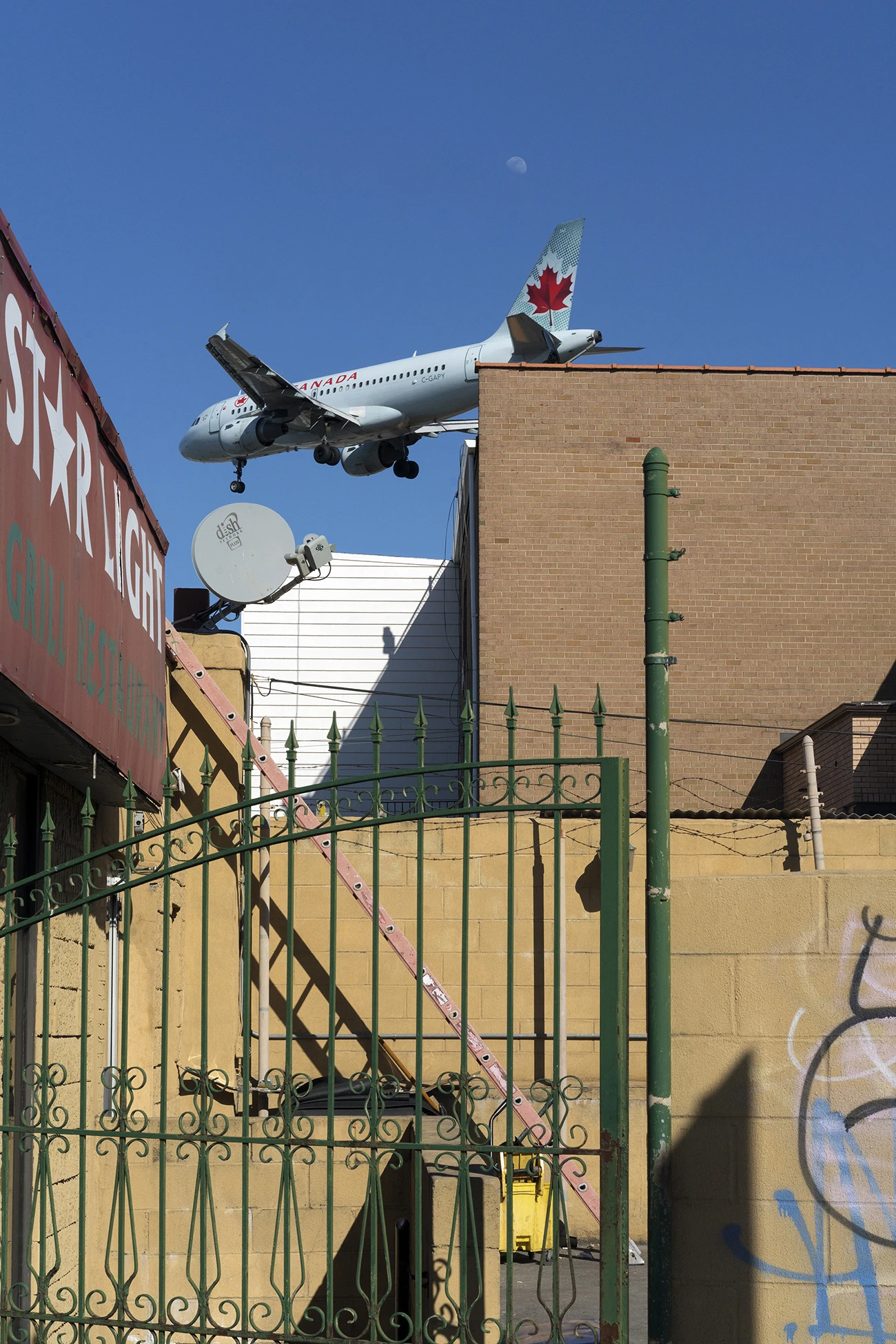
Noise, pollution, and the environmental cost of proximity to flight
During this extended period of observation, Rothenberg also began to document the environmental tensions embedded in the neighborhood’s fabric. While aircraft landings are quieter than takeoffs, the persistent noise—combined with the fine dust and fumes produced by the planes—makes everyday life increasingly difficult for residents.
“Locals regularly submit complaints to New York City airport authorities about the noise and environmental conditions,” Rothenberg says. Landing Lights Park thus becomes a trigger for broader environmental questions. The jets flying so close to homes not only generate sonic disruption but also contribute to serious air pollution. Rothenberg embraces this connection between landscape and ecology, hoping that his photographs convey the sense of precarity we must now acknowledge. “These images are reminders of how fragile our balance with the built environment has become.”
Real or simulated? When documentary photography mimics digital unreality
If on one hand Rothenberg’s Queens project bears witness to the real effects of modern aviation on urban life, on the other it raises a timely question: are these surreal scenes even real? In an era increasingly shaped by AI-generated visuals, many of his photographs could easily be mistaken for synthetic creations.
“It’s fascinating how our perception of imagery is now shaped by digitally generated content and manipulated viral videos,” Rothenberg observes. “This brings me back to my experience witnessing the events of 9/11—a moment that profoundly altered not just my own sense of reality, but the broader cultural understanding of images.”
He recalls the disorienting realism of photos from that day, such as The Falling Man, with their shocking level of detail. “They seemed both impossible and unmistakably true. That same sense of unsettling reality stayed with me while working on Landing Lights Park.”
Back in 2018, creative AI was still in its infancy, and the public attitude toward hyperreal images was more skeptical. Still, Rothenberg suggests that even then, our visual literacy was already evolving. Media manipulation and collective doubt had begun to change how we relate to photography—and how we decide what’s real.
From fieldwork to photobook: recognition and publication
The Landing Lights Park project was published by Roman Nvmberals and named one of the Best Photobooks of 2018 by Time magazine.
About the artist: David Rothenberg
David Rothenberg is a photographer and educator based in New York City. He won the PHOTO 2021 x Perimeter International Photobook Prize for his book Roosevelt Station. In 2019, he received the Peters S. Reed Foundation Grant for photography.
His work has been published by The New York Times, Hyperallergic, Libération, Die Zeit, and The New Yorker. His photographs are part of the permanent collection at the Museum of the City of New York and held in numerous special collections, including those of the School of the Art Institute of Chicago, MoMA, and the Amon Carter Museum of American Art.
Rothenberg holds an MFA from Bard College and a BFA from Parsons School of Design.
Claudia Bigongiari
